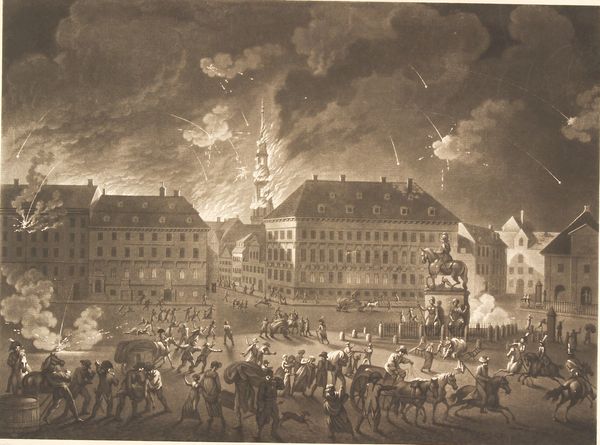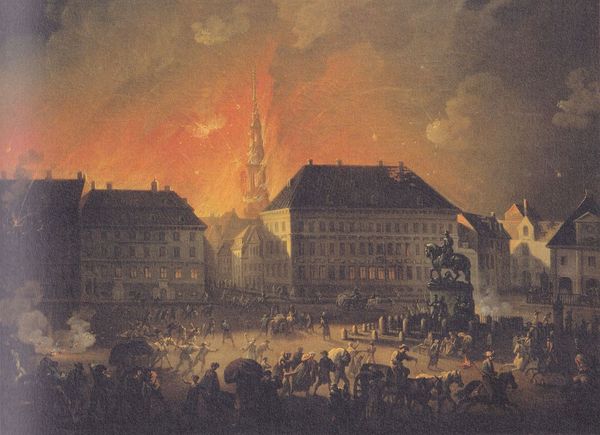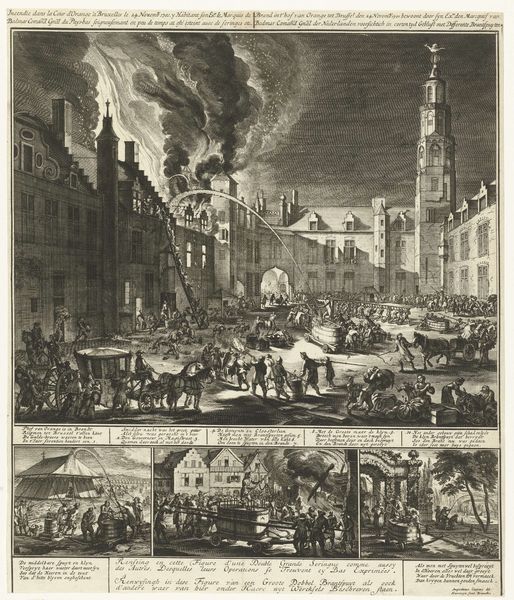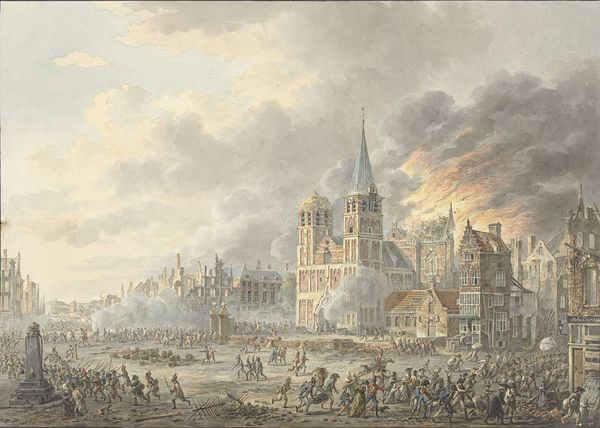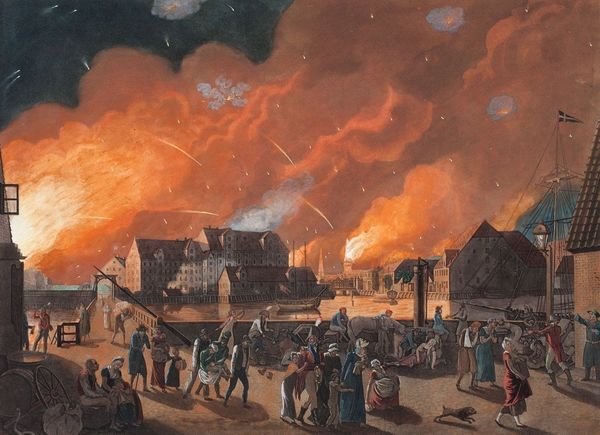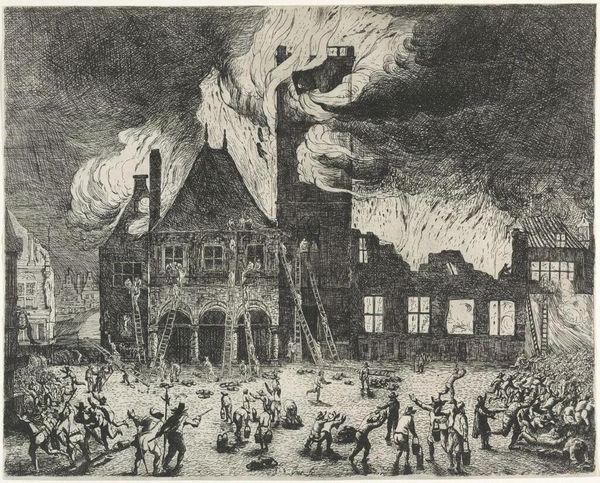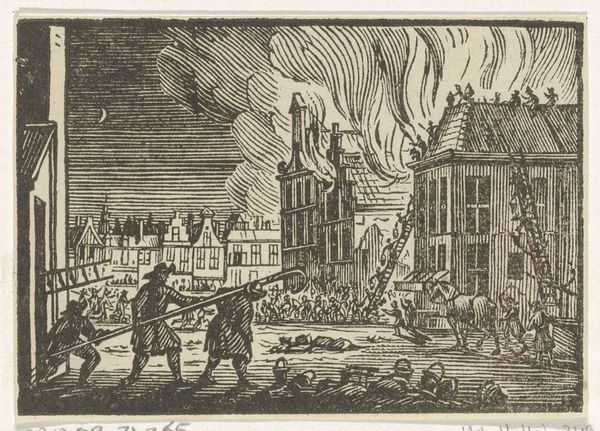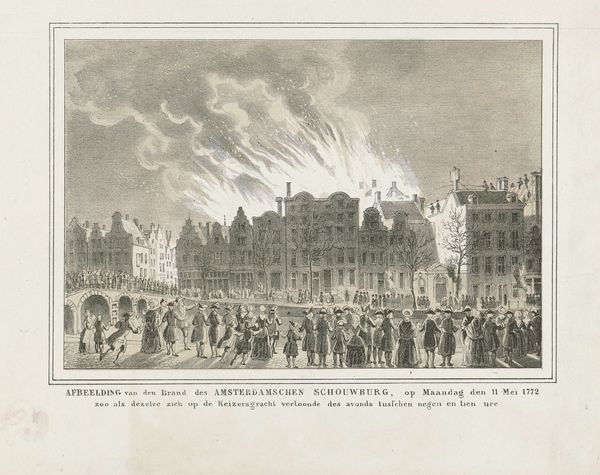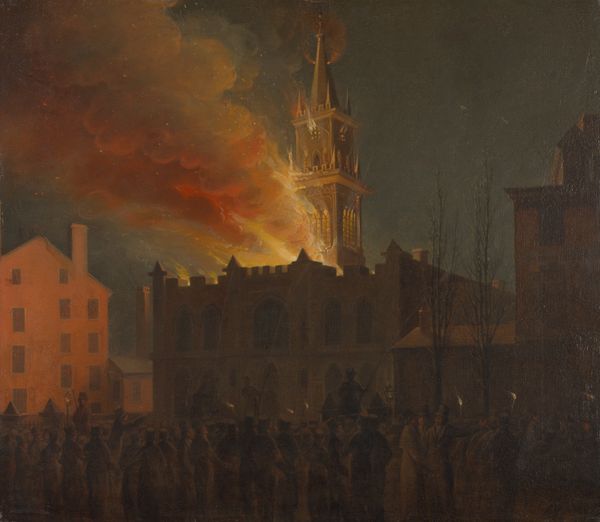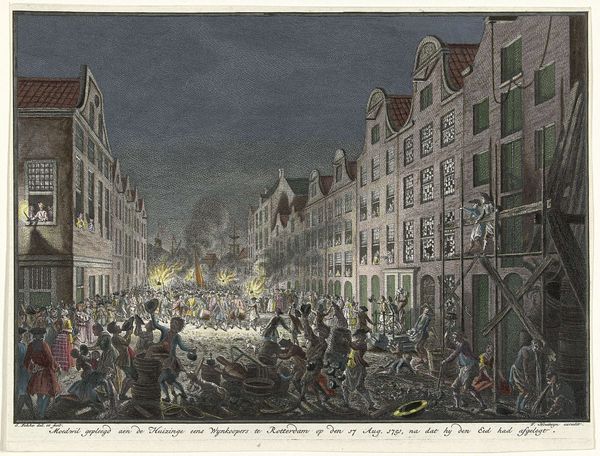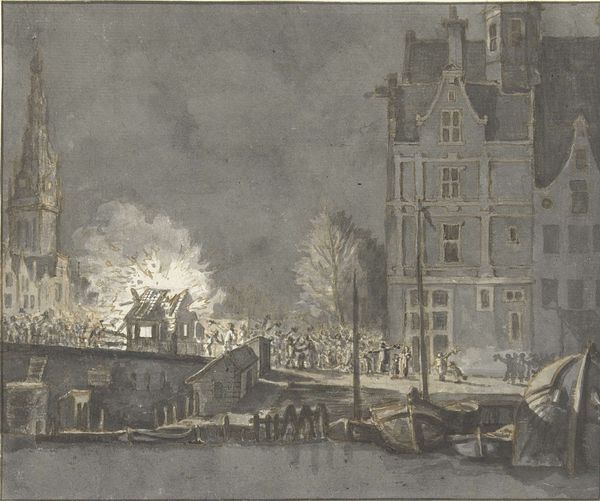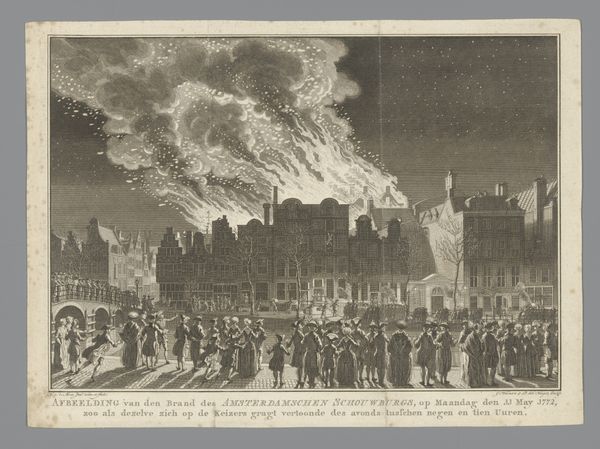
aquatint, print
#
aquatint
#
urban landscape
# print
#
oil painting
#
romanticism
#
cityscape
#
history-painting
Dimensions: 412 mm (height) x 527 mm (width) (bladmaal), 316 mm (height) x 429 mm (width) (plademaal), 293 mm (height) x 401 mm (width) (billedmaal)
Curator: This aquatint, rendered between 1808 and 1809, is J.F. Clemens’s interpretation of "The Most Dreadful Night in Copenhagen." It’s currently held at the SMK, the Statens Museum for Kunst. Editor: Dreadful is right. I immediately pick up on this chaotic atmosphere, rendered in almost apocalyptic tones of fiery oranges, contrasting with the muted cityscapes. It speaks of upheaval and immense collective anxiety. Curator: Absolutely. Aquatint allows for such gradations in tone, emphasizing light and shadow to amplify the emotional impact of the depicted historical event. Look at how the spire in the background becomes almost an emblem of vulnerability. Editor: Precisely! That spire almost functions as a phallic symbol. Here we witness both destruction and the possible genesis of resilience from these very ruins—a very patriarchal stance. And those streaks in the sky, what are they intended to convey symbolically? Curator: Likely they represent falling bombs, literally raining down destruction upon the city. The chaos also feels…ritualized. Even those fleeing figures down below. Each person and horse is very carefully placed, with attention given to linear perspective to highlight buildings that survived and buildings on fire. Editor: So, beyond simply portraying the event, are you saying that Clemens imposes order on chaos through deliberate arrangement and the adoption of familiar visual symbols? It seems he aimed not only to illustrate an event but also to console viewers during troubled times through formal, ideal structure. It reminds us how quickly fear is packaged for mass consumption. Curator: Indeed. Through the lens of Romanticism, the artwork captures not only a moment of great loss, but also hints at a transformative ordeal. It reflects how communities can forge solidarity amid immense tragedy and the rebuilding to come. Editor: I leave this work with the sense that in moments of crises people pull together as communities for good and ill. Collective trauma always functions as an opportunity for future transformation, whether intentionally designed, or chaotically unfolding.
Comments
No comments
Be the first to comment and join the conversation on the ultimate creative platform.
